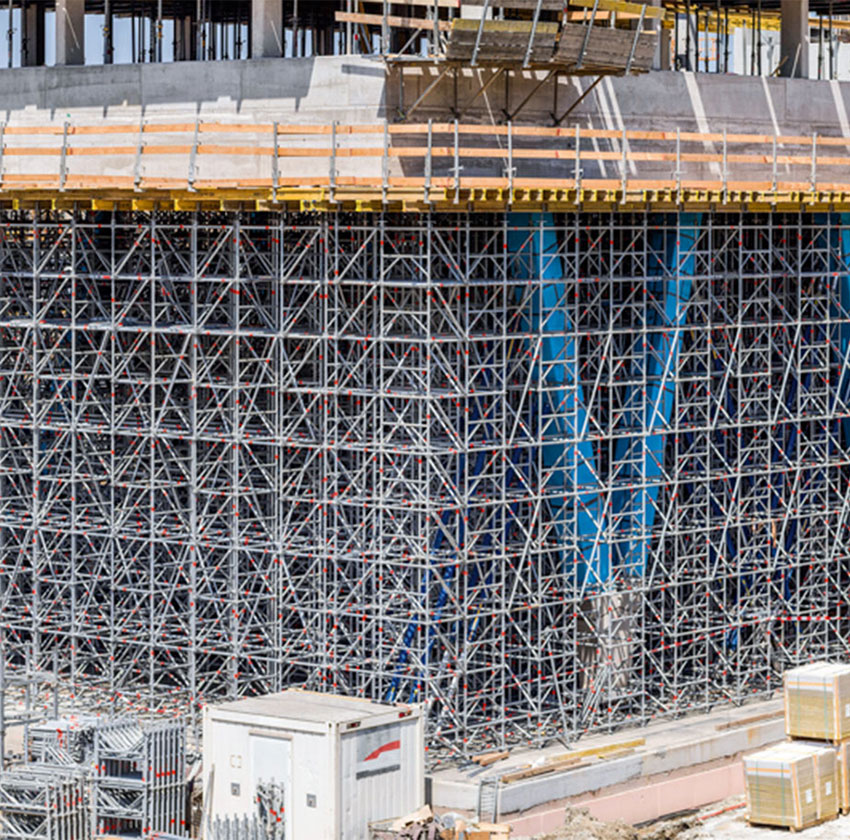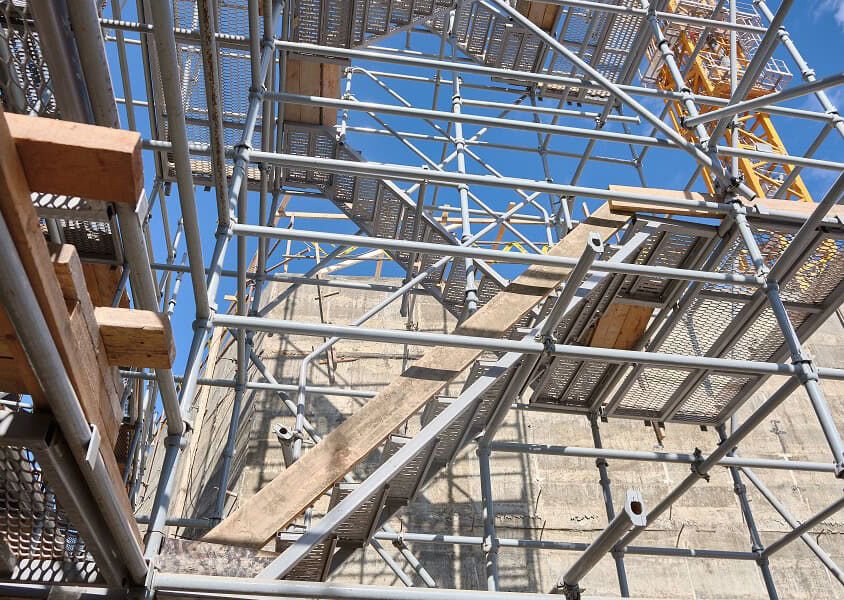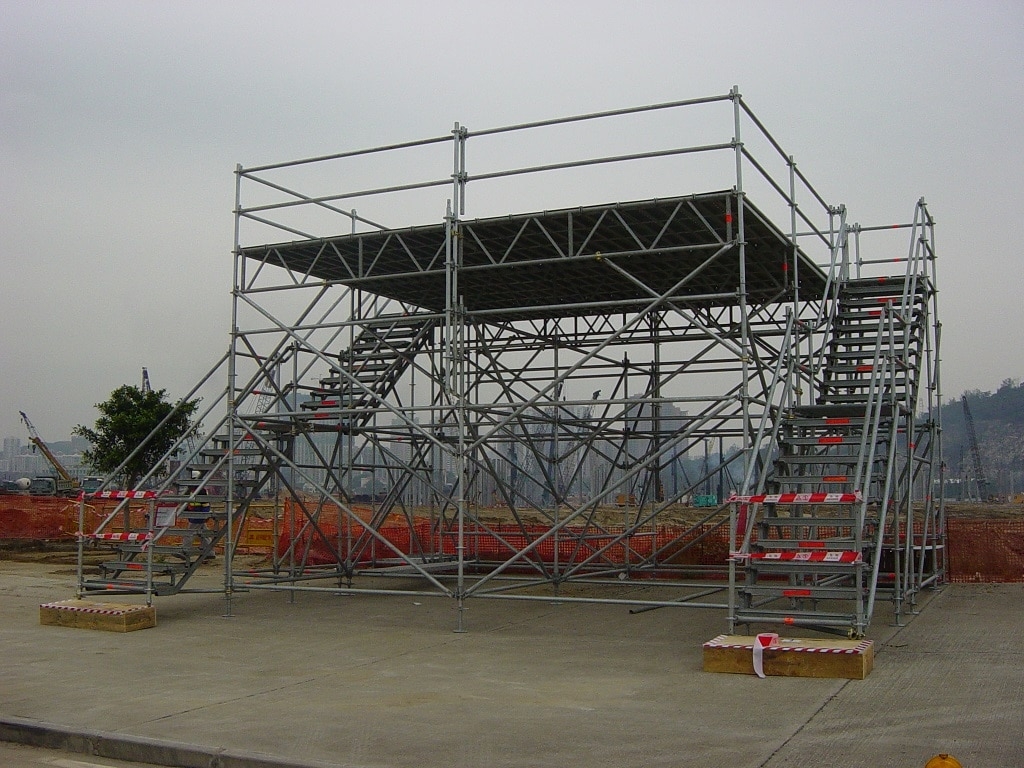Checking Out the Different Kinds Of Scaffolding Made Use Of in Construction Projects
The construction sector counts greatly on various sorts of scaffolding to meet specific job requirements, each offering distinctive advantages and applications. Standard framework scaffolding gives a sturdy structure for general tasks, while put on hold scaffolding is important for service high-rise frameworks. Various other options, such as system and rolling scaffolding, accommodate efficiency and flexibility, specifically. Furthermore, the cantilever variant verifies invaluable in city atmospheres where area is constricted. Recognizing the subtleties of these scaffolding types is essential for enhancing safety and performance on building and construction sites, prompting a more detailed assessment of their special attributes and applications.

Conventional Framework Scaffolding
Typical frame scaffolding is among one of the most extensively used approaches in the building industry due to its robustness and convenience. This system is composed of horizontal and upright frames that are set up to develop a stable platform for employees and products. The primary components include vertical messages, horizontal ledgers, and diagonal braces, which with each other offer a strong structure that can support significant loads.
One of the vital advantages of traditional structure scaffolding is its versatility to various building projects, varying from household buildings to large commercial structures. The modular style allows for very easy assembly and disassembly, making it efficient for both temporary and lasting jobs. Additionally, the system can be personalized in height and width, fitting various building styles and website problems.
Safety and security is critical in scaffolding applications, and traditional frame systems are equipped with guardrails and toe boards to stop drops and make certain worker security. Additionally, routine inspections and adherence to security policies are vital in keeping the honesty of the scaffold. In general, standard frame scaffolding continues to be an essential choice in the construction sector, offering a reputable system for labor and enhancing general job effectiveness

Suspended Scaffolding
Put on hold scaffolding uses an unique option for building tasks that call for accessibility to elevated surface areas, especially in scenarios where traditional structure scaffolding might be unwise. This kind of scaffolding is normally put on hold from the roof covering or upper levels of a framework, utilizing a system of wheels, ropes, and platforms to develop a working room that can be gotten used to various heights.
Among the primary advantages of suspended scaffolding is its flexibility. It can be conveniently repositioned or reduced to fit adjustments in building and construction demands, making it ideal for jobs such as home window setup, frontage work, and upkeep on high-rise structures. Additionally, the minimal impact of put on hold scaffolding enables much better use ground area in city environments, where room is usually restricted.
Safety is a critical factor to consider in the usage of suspended scaffolding. Appropriate rigging and anchoring systems need to be employed to ensure security and prevent mishaps. Operators has to also be educated in the safe use this devices. On the whole, suspended scaffolding gives a reliable and efficient option for accessing hard-to-reach locations in different construction situations, enhancing both efficiency and safety and security on site.
System Scaffolding
System scaffolding, frequently considered a modern option in the scaffolding sector, includes pre-engineered parts that can be swiftly assembled and adapted for numerous building and construction projects. Scaffolding. This sort of scaffolding is identified by its modular design, which permits versatility and efficiency on job sites, accommodating various elevations and structural demands
Commonly made from high-strength steel or light weight aluminum, system pop over here scaffolding offers boosted sturdiness and security. The parts include upright blog posts, straight ledgers, and angled braces, which adjoin firmly, making certain a robust structure. The design often includes standardized installations, simplifying setting up and disassembly processes, thereby lowering labor time and expenses.

Rolling Scaffolding
Rolling scaffolding is a versatile alternative to traditional fixed scaffolding, created for flexibility and convenience of usage on building sites. This sort of scaffolding contains a system sustained by structures with wheels, permitting employees to conveniently relocate it as needed. The wheelchair feature considerably enhances productivity, as it lessens downtime related to setting up and taking apart fixed scaffolding.
Normally created from lightweight products such as light weight aluminum or steel, rolling scaffolding uses a strong yet portable remedy for tasks calling for regular repositioning - Scaffolding. It is particularly useful in tasks such as painting, drywall installment, and electrical job, where access to various elevations and places is necessary
Security is critical in rolling scaffolding design, with attributes such as locking wheels to avoid unexpected motion when in usage, and guardrails to secure employees from falls. Additionally, several designs are flexible in height, suiting numerous project requirements.
Cantilever Scaffolding

The style of cantilever scaffolding typically involves using arms or braces secured to a building or structure, making it blog possible for the system to prolong outside securely. Security is critical; thus, these scaffolds have to be crafted to endure ecological conditions and different loads. Normal assessment and maintenance are important to make sure structural honesty and employee safety.
Cantilever scaffolding is favored for its versatility check my blog and reliable use of room, making it a prominent option in urban settings where area constraints are common. In addition, it assists in easier accessibility to high elevations, eventually contributing to the total performance of building tasks. Similar to all scaffolding types, correct training and adherence to safety requirements are essential for workers making use of cantilever scaffolding.
Conclusion
Standard frame scaffolding offers stability, while suspended scaffolding offers adaptability for raised jobs. System scaffolding assists in fast setting up, and rolling scaffolding boosts mobility for differing job settings.
Traditional structure scaffolding gives a sturdy structure for basic tasks, while suspended scaffolding is important for work on high-rise frameworks.Moving scaffolding is a functional option to standard fixed scaffolding, designed for mobility and convenience of usage on building and construction websites. As with all scaffolding types, proper training and adherence to security standards are critical for employees making use of cantilever scaffolding.
Conventional framework scaffolding offers stability, while suspended scaffolding provides flexibility for elevated tasks. System scaffolding promotes fast setting up, and rolling scaffolding improves wheelchair for varying work atmospheres.
Comments on “Temporary Roof Scaffolding to Ensure Safe Working Conditions During Projects”